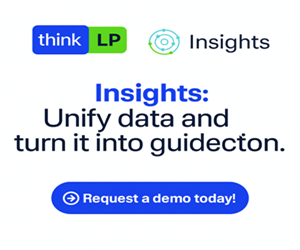INDUSTRY FOCUS
Autocorrection and Data-Driven Justice
How can retail benefit from advances in Artificial Intelligence that are revolutionising justice and healthcare?
By John Wilson, Executive Editor
The universal symbol of justice is a Greek female figure carrying a set of scales whilst wearing a blindfold. The meaning behind this statue, which stands aloft over London’s Old Bailey (the most famous criminal court in the UK), is that justice is both impartial and objective. She is blind to colour, creed, culture, or religion and will administer fairness without fear or favour, not treating friends differently from strangers or rich people better than the poor.
But this impartiality sometimes comes into question. Sociological studies highlight that our prison populations more accurately reflect society’s deeply institutionalised prejudices where marginalised communities and individuals are more likely to be brought before the courts, while more privileged suspects, with arguably greater access to legal representation, evade justice.
So in today’s digital age, the symbol of blind justice is being offered an algorithmic helping hand in its implementation and distribution. Artificial intelligence (AI) is being introduced to operate as a form of extra checks and measures so that justice is not only carried out to the letter of the law but also seen to be done.
It is proving that even if justice cannot be blind in the courtroom, there is a way in which it can be autocorrected through the process using data-driven examples of behaviours, rather than a set of physical characteristics that brought the accused to the attention of the criminal justice system in the first place. In other words, AI is helping to get beyond human prejudice and its flaws. It is destined to change our world but not in the scary way that many would have us believe. For example, in 2016, management consultants Forresters predicted that by 2021 around 6 per cent of US jobs could be eliminated by the technology—the equivalent of nine million jobs. But the overall conclusion of the report was that for all jobs automated out of existence, more opportunities would be created for new ones—tasks that we as of yet know little about in this brave new world.
And what of the results of automating more human-based decision-making in law enforcement, for example? A project in the US is providing a compelling argument for administering a form of post-trial justice based upon joined-up AI data that can not only administer fairer outcomes but also save the state billions of dollars as well as preventing repeat offending.
Identifying and Breaking the Cycle
In August 2015, an exciting concept that became known as data-driven justice (DDJ) crept into the American psyche after President Barack Obama said, “Our criminal justice system isn’t as smart as it should be. It’s not keeping us as safe as it should be. It is not as fair as it should be. Mass incarceration makes our country worse off, and we need to do something about it.” His comments were based upon the fact that every year, more than 11 million people move through America’s 3,100 local jails, many on low-level, non-violent misdemeanours, costing local governments approximately $22 billion a year. In local jails, 64 per cent of people suffer from mental illness, 68 per cent have a substance abuse disorder, and 44 per cent suffer from chronic health problems.
Using AI, it was recognised that a relatively small number of these highly vulnerable people cycle repeatedly, not just through local jails but also through hospital emergency rooms, shelters, and other public systems, receiving fragmented and uncoordinated care at great cost to American taxpayers and with poor outcomes. For example, in Miami-Dade, Florida, it was discovered that ninety-seven people with serious mental illness accounted for $13.7 million in services over four years, spending more than 39,000 days in either jail, emergency rooms, state hospitals, or psychiatric facilities in their county. In response, the county provided key mental health de-escalation training to their Police officers and 911 dispatchers. Over the past five years, Miami-Dade Police have responded to nearly 50,000 calls for service for people in mental health crises but have made only 109 arrests, diverting more than 10,000 people to services or safely stabilising situations without arrest. The jail population fell from over 7,000 to just over 4,700, and the county was able to close an entire jail facility, saving nearly $12 million a year.
On any given day across the US, more than 450,000 people are held in jail before trial, nearly 63 per cent of the local jail population, even though they have not been convicted of a crime. In 2014, Charlotte-Mecklenburg, North Carolina, began using a data-based risk assessment tool to identify low-risk people in jail and find ways to release them safely. Since the county began using the tool, significantly more low-risk individuals have been released from jail, the total county jail population has dropped by 40 per cent, and there has been no increase in reported crime.
To further break the cycle of incarceration, the Obama Administration launched the data-driven justice initiative with a bipartisan coalition of sixty-seven city, county, and state governments that committed to using data-driven strategies to divert low-level offenders with mental illness out of the criminal justice system and change approaches to pretrial incarceration so that low-risk offenders no longer stay in jail simply because they cannot afford a bond.
These innovative strategies, which have measurably reduced jail populations in several communities, have helped stabilise individuals and families, better serve communities, and often saved money in the process. The DDJ communities implementing strategies that proactively break the cycle of incarceration have proven to be effective in reducing unnecessary incarceration in jails. These strategies included:
- Bringing data together from across criminal justice and health systems to identify the individuals with the highest number of contacts with Police, ambulance, emergency departments, and other services, and link them to health, behavioural health, and social services in the community, with a goal of reducing overreliance on emergency healthcare and encounters with the criminal justice system.
- Equipping law enforcement and first responders with the tools they need to respond and divert. Recognising that Police officers, emergency medical technicians (EMTs), and firefighters are often front-line responders to people experiencing mental health crises. DDJ communities were empowered to create systems and protocols to help effectively de-escalate crisis situations and safely divert people to the appropriate service providers instead of arresting them.
- Using data-driven, validated, pretrial, risk-assessment tools to inform pretrial release decisions. DDJ communities have worked towards using objective, data-driven, validated risk-assessment tools to identify low-risk defendants held in jail and identify opportunities for their safe release.
The Obama Administration developed a toolkit to provide concrete guidance for jurisdictions seeking to develop a strong pre-arrest diversion programme. The brief, step-by-step toolkit was designed to synthesise best practices, policies, and programmes that have been effective in DDJ communities. It was to provide links to federal resources and a funding table to assist jurisdictions in identifying opportunities to support their diversion programmes.
As the initiative gathered pace, more than 67 states, cities, and counties committed to join this DDJ initiative. Appriss, one of the world’s largest providers of AI-based solutions for the public and private sectors, was one of the organisations behind the DDJ initiative. It released new analysis of data from over 3,000 local, criminal justice agencies to help DDJ communities identify indicators in jail data that appear to be most predictive of individuals at high risk of rearrest, overdose, and housing instability or homelessness.
DDJ jurisdictions can use these data fields to develop reports from their jail management systems to help identify individuals with frequent bookings for low-level offences. Appriss also released its national-level analysis of more than 9.8 million bookings from 2015 to identify arrest patterns and repeated bookings, finding more than 276,000 individuals across the country who had four or more bookings in one year. Using this analysis, Appriss has been developing a data-driven product that will systematically identify individuals who meet data-validated criteria as high users of multiple criminal justice and healthcare systems.
Appriss’s expertise in the retail, criminal justice, and public health sectors is based upon automation using machine-learned data to bring to life the joined-up stories behind billions of database variables and building large-scale statistical models that can predict a wide range of linked behaviours in order to deliver more cost-effective solutions in terms of justice and social care.
Numbers in isolation are just numbers, but when interrogated across organisational databases, they can identify patterns, the transparency of which can subsequently help develop methods of managing common problems at a fraction of the current costs. In healthcare, this health-record modelling has helped identify patterns of opiate abuse through over-prescription across US states that would not previously have been visible. The data has proved invaluable in flagging the issues and prompting a human interaction where, for example, an individual has been able to get five different opiate prescriptions from five different doctors.
Joining up data in this way in the UK criminal justice system and the National Health Service could also be beneficial in terms of identifying patterns, for example, where prisoners could be safely released from over-crowded jails or where so-called “hospital bed blockers” could be identified from the patterns presented and subsequently released into the community with the required social care packages.
Applying Lessons to Loss Prevention
If this technology can be utilised to tackle some of the knottier issues of criminal justice and national healthcare irregularities, it also offers huge potential in the world of business. Appriss Retail is the new name of Sysrepublic (best known for its data-mining technology in the UK) and The Retail Equation (the US-based retail data-science specialist organisation), which came together in 2016. The organisations have merged to build a retail-intelligence business to map analytical insights and aid real-time decision-making in the finance, marketing, and loss prevention worlds, using the lessons that it has been able to develop in both DDJ and healthcare modelling. It can call upon inventory and shopping intelligence from more than 100,000 locations—both bricks and mortar and online—in forty-five countries across six continents and now wants to turn its learnings into better outcomes in the world of loss prevention.
Appriss Retail, which has links to more than eighty-five retailers in the US and Europe, has an impressive track record on data density that it can call upon. There are more than five million employees in its database, and the business has access to more than 45 billion transactions across 100,000+ stores when it comes to developing its machine-learning models. The business is built on the knowledge of commercial managers and PhD scientists with the objective of helping subscribers to the service make better-informed, real-time decisions using data-science expertise—and complemented through the ownership of one of the largest retail transaction databases in the world.
The power of this data was revealed in 2017 when Appriss carried out research on merchandise returns and fraud in the US using the National Retail Federation (NRF) data for the same year. After crunching the numbers, the Appriss team calculated that the “overwhelming” loss of total merchandise in terms of sales due to returns and fraud came to $351 billion, a sum that almost matched that of the federal budget deficit ($400 billion), which brought to light the true extent of losses impacting retail when highlighting the context behind the figures.
The organisation is using machine learning, predictive modelling, artificial intelligence, and deep learning of hundreds of transactional variables to identify patterns of fraud based on the experience of many of its retail customers. It also has the ability to learn and evolve over time as different scams arise.
The objective of the exercise has been to create a comprehensive list of model variables that can best predict “problematic” employees by looking at behaviour categories including voids, discounts, employee transactions, refunds, suspected collusion, no sales, and variations of all the above. Artificial intelligence has become a generic term to cover a multitude of descriptors for computers that mimic human behaviours. AI creates algorithms that emulate human intelligence in order to make automated decisions. Predictive models and machine learning are tools or subsets of AI that work to speed up the identification of fraudulent behaviour without having to revert to human interaction until such time that an LP professional is required to further investigate what has been brought to their attention.
“We are automating what for many loss prevention professionals is still a manual, labour-intensive process,” said David Speights, PhD, chief data scientist for Appriss Retail who presented his findings on machine learning and the evolution of employee fraud detection in Dublin last year. “We take the data that retailers have already provided and transform it into thousands of variables based on the information. For example, we would look at the number of voids processed by an employee, the number of transactions with more than 80 per cent of the lines voided by the employee, the number of self-processed refunds, and the monetary value associated with all of those refunds. Ordinarily, if an LP team sees something suspicious they can go and take a look, but we can do this with the back up of thousands of transactions, and by so doing, we take the human intervention out of the process and can arrive at more-informed conclusions based upon the science.”
Three US retailers are already part of a trial as “early adopters,” but the ambition is to reach double figures to give greater forensic results.
“I would like to get to ten or more retail customers fully using the system in their daily processes,” said Speights.
“There are no data protection issues as none of the customer information is shared. The algorithm is simply to detect patterns within the retailers’ own data. The algorithms are not designed to be explicit as they only make recommendations about store employees who might require a second look by LP associates. Our goal is to improve the identification of the case as provided for review. We also provide some guidance as to why we are recommending them for review. The loss prevention professional will be responsible for the due diligence to see if there is any actual wrongdoing, much as they do today. They will review CCTV footage and conduct interviews to get to the truth,” he added.
Jerry Boersma, the Appriss chief software architect, has the enviable task of applying the science developed by the legion of PhD scientists. “It is all about taking the learnings and insights and developing the product in a way that a retailer can make use of in their day-to-day work. This is about simplifying it and packaging it in a way that everyone can understand. It is not simply identifying the problem but doing something about it—putting this to work and coming up with a solution to the kind of margin erosion that is impacting the business,” he said.
“Also, at every step of the way, we are feeding the learning outcomes back into the AI technology, so lessons are learned from the patterns, and this improves the model. Retail is not run by data scientists, but business people. Scientists can come up with the algorithms that identify the data, but this would be completely ineffectual without the human intervention. Together they improve the overall model so that senior management can see how effective it can be in moving the needle on shrink,” added Boersma, who is based in London.
For every dystopian view of the march of AI, there are louder voices pointing towards a brighter new world with infinite new possibilities. Artificial intelligence, rather like the industrial “Spinning Jenny” did for the textile industry in the nineteenth century, is going to revolutionalise the worlds of work and leisure by automating much of the daily grind of our lives, and that includes assisting many decision-making processes by providing algorithmic patterns that present evidence in an unbiased manner. Early signs indicate that it can achieve this goal and not only reduce costs but also deliver fairer outcomes so that we can argue that “justice can truly be blind.”






